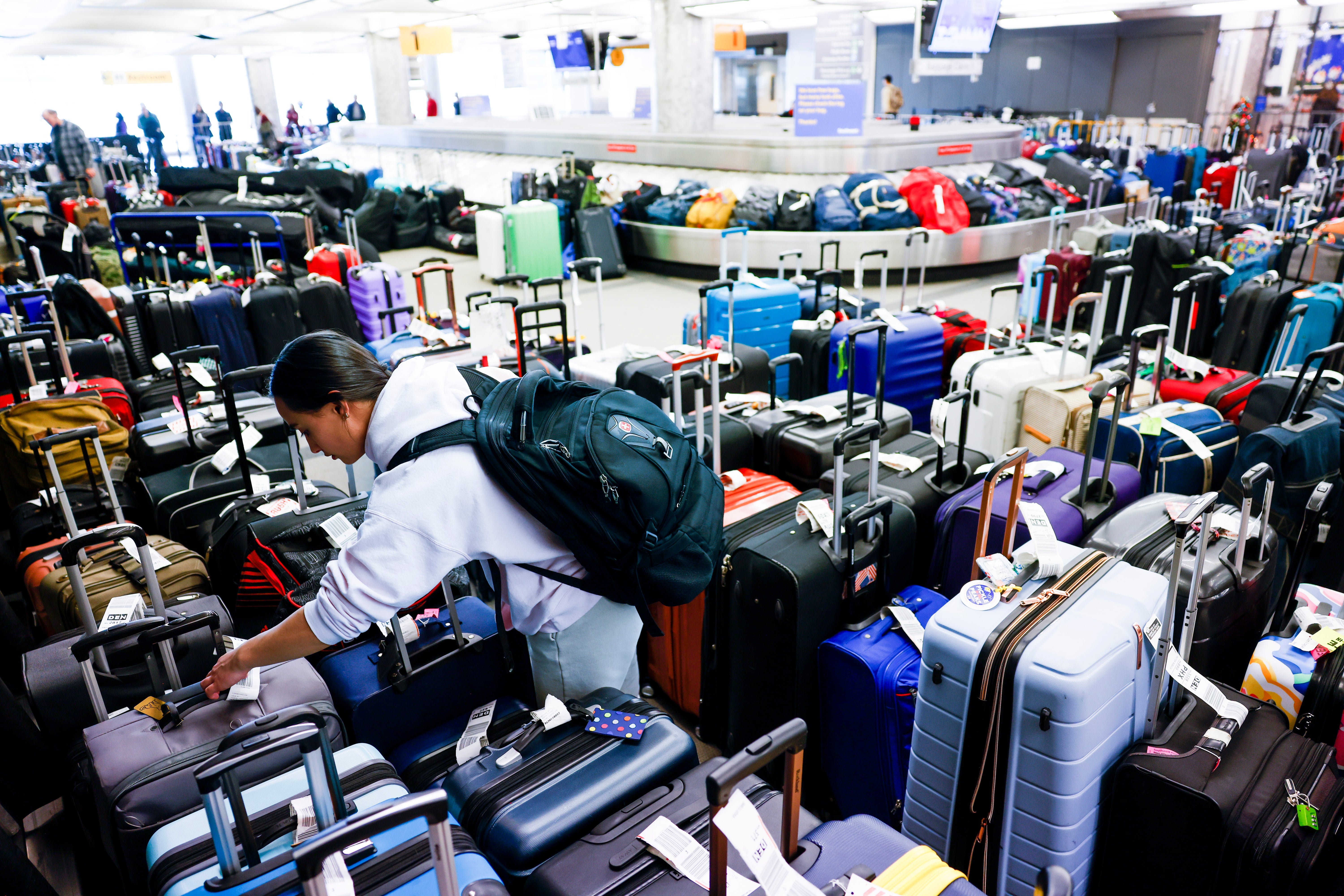
Perhaps unknowingly, airline passengers who lived through the outage of the Federal Aviation Administration’s (FAA’s) Notice to Air Systems (NOTAM) system in January or Southwest Airlines’ meltdown in December were part of history.
The NOTAM outage was the first time the FAA paused all domestic departures in the U.S. since 9/11. This ground stop of just a few hours caused enormous delays in the air transportation system, resulting in three out of five flights being delayed or cancelled, and average delays reaching almost 90 minutes, according to FlightAware.
Weeks earlier, the unprecedented volume of flight cancellations that occurred over more than a week as a result of Southwest’s meltdown forced the airline to abandon its automated decision support tools and revert to employees manually putting its complex network of flights, aircraft and crew schedules back together. From December 22 to 29, Southwest canceled just over half its scheduled flights, causing more than 15,700 cancellations, an immediate loss of $620 million in the fourth quarter of the 2022 fiscal year—and an additional projected loss of $300–350 million in the first quarter because of “a carryover revenue drag from the operational disruption” according to Southwest executives.
Both failures stem from the same fundamental challenges facing a sprawling, and increasingly antiquated, U.S. air travel network. As deeper investigations probe these events, we need to find solutions that update the antiquated IT systems and business practices they exposed, and we must change the way we fund the FAA, whose regulatory activities undergird the entire U.S. air travel system.
NOTAM failed when FAA contractors deleted files from the vital flight planning system, which relies on “failing vintage hardware,” according to the agency. This comes after multiple industry stakeholders have called for increased federal funding for the FAA, and Airlines for America and other organizations have noted the need for dependable funding untethered from the election cycle. Thankfully we can use successful projects from NextGen, the Next Generation Air System, a program within the FAA that is modernizing the U.S. National Airspace System (NAS), as a model for reform.
Southwest’s meltdown came when slow-moving blizzards with minus 40 degree Fahrenheit windchills rolled through Denver and Chicago, two of its biggest depots. This overwhelmed its outdated flight management systems, which operate within a primarily point-to-point airport network, which is more vulnerable to disruption than the hub-and-spoke model used by other airlines. For context, by December 24, the third day of the weather event, Southwest, which was also managing an abnormally high number of employees calling in sick, was cutting 55 flights per hour compared to just four per hour on American Airlines’ mainline service.
While investigations by Southwest and the U.S. Department of Transportation are underway to help identify root causes, what is clear is that, like with NOTAM’s failure, Southwest’s system needed an upgrade and was unable to adapt when put under stress. The airline plans to spend $1 billion this year on IT upgrades and the replacement of its flight scheduling system, but it must also be willing to reform its business models. For example, Southwest could more aggressively cancel flights before major weather events and fix labor agreements, allowing pilots to electronically confirm assignments when the snow falls. Luckily, there are also examples from other airlines of how to make air travel more robust.
Robust networks help isolate delays, helping airlines more quickly return to normal operations. I interviewed Timothy L. Jacobs, former director of crew systems and technologies at American Airlines, who, with his colleagues, designed robust networks at that airline using “hub isolation” and “crew with aircraft” concepts to assign the same aircraft and crew to out-and-back round trips that use the same hub, e.g., Dallas to Boston and Boston to Dallas. If the Dallas-to-Boston leg is canceled, it is easier to keep delays from spreading to other hubs, because you can keep both your crew and aircraft in Dallas, where you want them to be for the next pair of flights. In contrast, Southwest’s point-to-point network makes it more difficult to contain flight disruptions.
Southwest’s meltdown highlights the complexity and interconnectedness of our air transportation system. That partly explains why air traffic control (ATC) system modernization is so challenging and why funding reform is so necessary. This is where NextGen comes in. With NextGen, the FAA is modernizing the NAS with new capabilities like “precision satellite navigation, data link communications for air traffic controllers and pilots and an integrated weather system.”
NextGen arose from a 2003 congressional mandate that FAA collaborate with multiple organizations and federal agencies to develop a plan for modernizing NAS by 2025. And while important milestones have been met by FAA and its industry partners over the last 20 years, a 2021 report by the Office of the Inspector General found that “FAA has struggled to integrate key NextGen technologies and capabilities due to extended program delays that caused ripple effect delays with other programs.” This results both from shortfalls in funding for NextGen, which multiple stakeholders including the CEOs of American, Delta, and United have decried, and from a lack of reliable funding streams for the FAA. However, there is disagreement on whether the FAA should continue to lead these efforts. In 2014, the FAA’s Management Advisory Council recommended that a separate organization, potentially modeled after NAV CANADA be formed. NAV CANADA was founded in 1996 and is a private organization responsible for operating and managing Canada’s civilian air space. Advocates for ATC privatization in the U.S. point to the greater flexibility in not only spending but also collecting fees from airlines, drone operators and other potential new users of the airspace, which would provide a more equitable and stable source of funding removed from politics.
Even without creating a new regulatory body, we can look at NextGen’s successes to help plan future modernization. I spoke with Tim Niznik, director of analytics for the Integrated Operations Center at American Airlines, who was involved with a NextGen project in Charlotte, N.C., and Dallas that recommended when aircraft should pull back from gates in order to avoid long departure queues and more efficiently merge into the “highways” in the sky. Going into the project, researchers hypothesized that a metering approach, like the traffic signals used on highway ramps to control vehicle merging, would work, but found that virtual queues that accounted for en route information worked better. Niznik likens this to “Waze for the skies” wherein knowledge of congestion in the sky can help airlines better plan their routes and takeoff times, and what time they should pull back from the gate.
While this may seem simple, Niznik notes this “was a major overhaul of the airport operational system that tied together different [systems] within the FAA to link the surface operations and en route operations.” Niznik attributes this project’s success to multiple factors, including strong stakeholder participation, an agile software development process and the fact that NASA, which co-led this project with the FAA, had a dependable source of funding that accommodated unanticipated challenges.
In the wake of these two historic failures of our air travel system, I believe it’s time we recognize major technological and funding reforms are needed, from the airline level to the FAA itself. Both Southwest Airlines’ and the FAA’s meltdowns have shown us the dangers of leaving outdated infrastructure and practices in place. As we approach FAA reauthorization this year, I hope the aviation industry and its regulators make history again—this time in a positive way—through building upon lessons learned from successful projects, with Congress providing adequate and stable funding, and with research and new technology getting the priority they deserve.
This is an opinion and analysis article, and the views expressed by the author or authors are not necessarily those of Scientific American.


